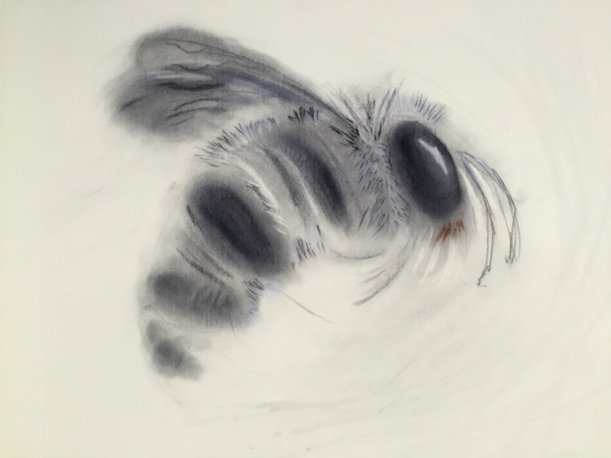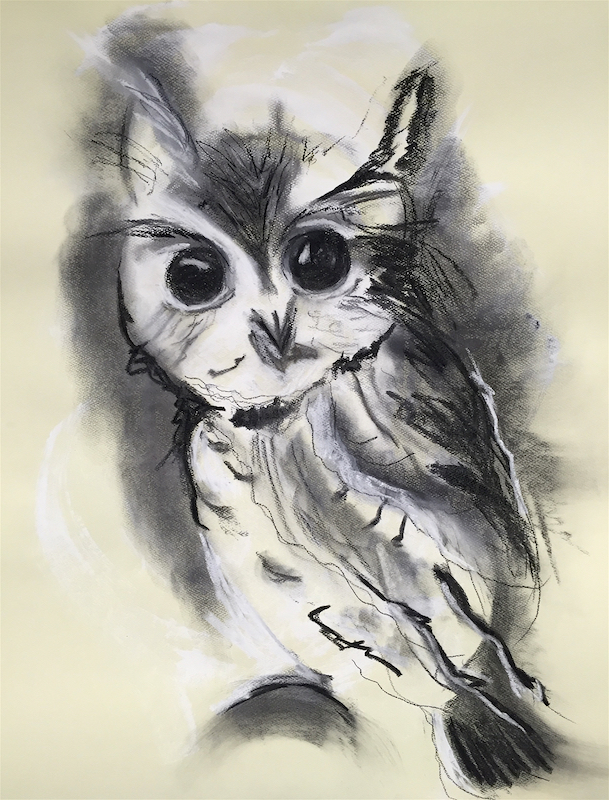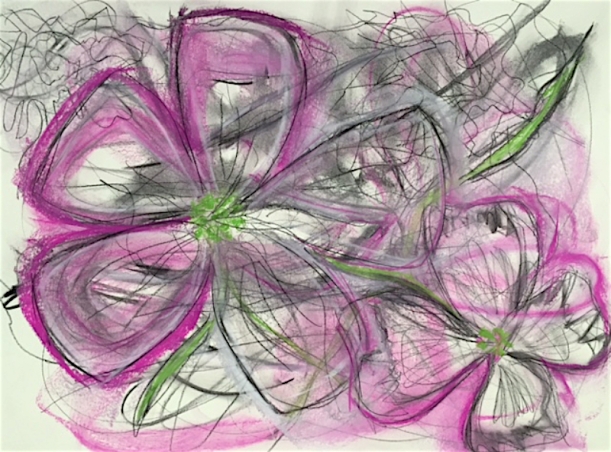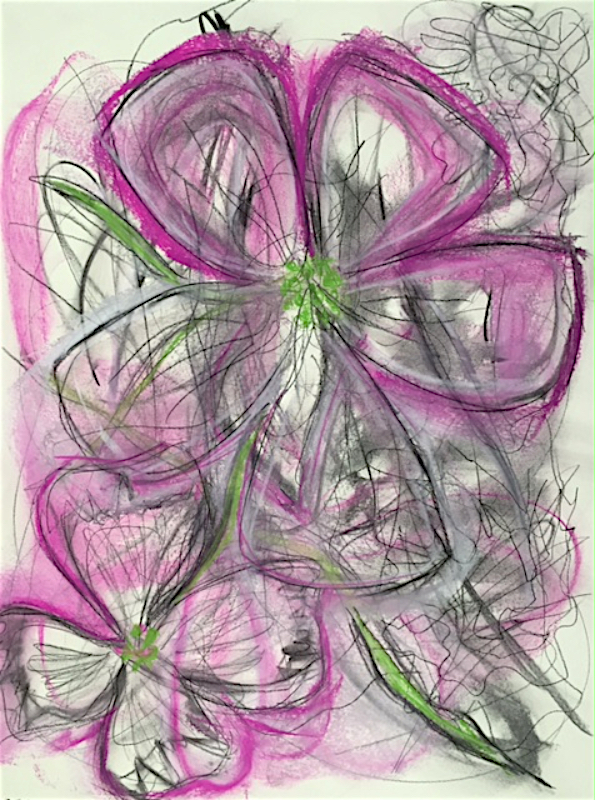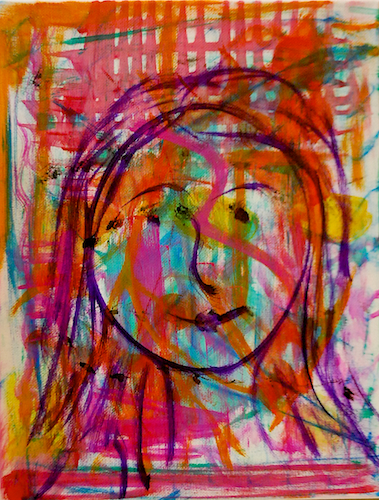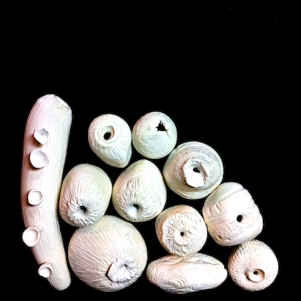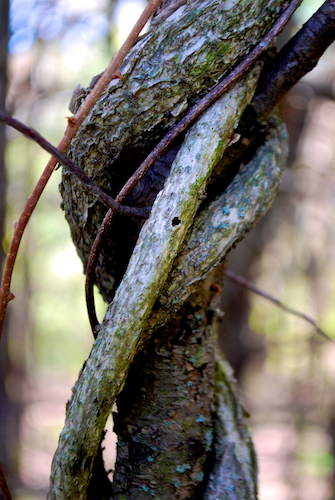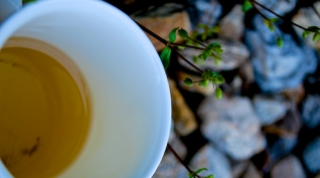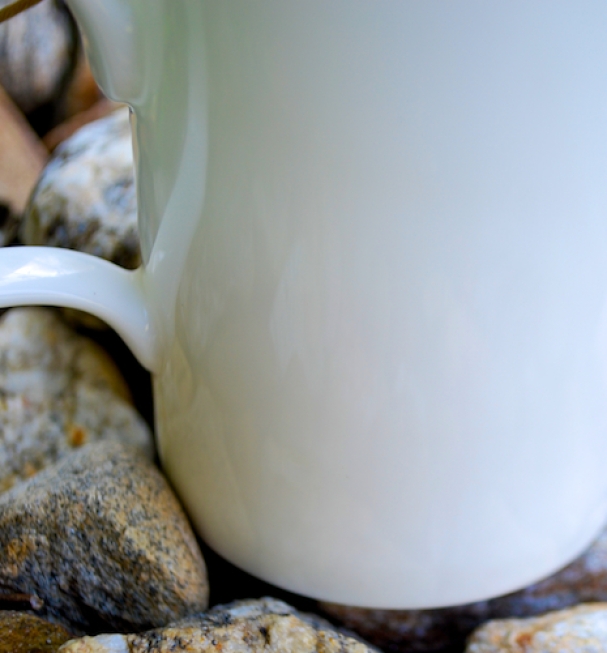I’m sure you’ve been here. You have a deadline to meet. You’re knee-deep in a flurry of activity. Ideas seem to ooze from your brain. Maybe you write them down. Maybe you don’t and later forget them. And then it happens. That big, bad vacuum of black emptiness opens up. No ideas come to mind. You have no clue what to do next in the studio. You stare at the white canvas. No words come to mind and your fingers are frozen on the keyboard.
You have hit the proverbial wall in the creativity department.
My friends and I often talk about how we keep our creative muses active, especially when our muse decides to take an extended vacation. It seems to be a common topic that we re-hash over and over.
This time, instead of just talking about it, I decided to ask my friends and cohorts to send me their tips for sparking the creative muse. What follows is a collection of 24 tips to jump-start the muse.

Dr. Finkelstein (image from the book “Tim Burton’s Nightmare Before Christmas” by Frank Thompson)
Tips to Spark the Creative Muse
1. Keep a notebook: Jan Warren of Broadbrook Art recommends keeping a notebook handy at all times. Jan keeps her notebook next to her painting area. When she rinses her brushes or changes a paint color, Jan uses the pages of the notebook to remove all the color from the brush. Then, Jan says, “When I am feeling particularly bereft of creativity I open up the notebook and use whatever I have on hand to layer images or color over those paint blotches. This mixed media notebook then serves as color studies, technique trials…some even become final pieces for sale.”
2. Music & nature: Pat Krachune shares “When I need some inspiration, I listen to classical music and that usually gets my juices flowing to create. I also sit in my courtyard and look at my fountains and watch the birds….nature relaxes and inspires me! ” Pat also finds inspiration watching other artist’s videos on YouTube. Check out Pat’s work on her blog, Art 4 Liberty.
3. Schedule the time: Judy Warner tells us, “I go in my “studio” at the scheduled time and start something, or work on something that needs improvement whether I feel “creative” or not—and that usually seems to get me going.” Check out Judy’s paintings on her Facebook page
4. Take an adventure drive: Photographer Roxanne Marshal takes what she calls an “adventure drive”. “I just pick a direction and go. I usually come across landscapes and water vistas perfect to photograph and sometimes even some other interesting items as well. This really gets my brain cranking ideas for framed images – possibly even 3D or a mixed media piece.” See Roxanne’s photography on her site, A Picture’s Worth
5. Take a break: Deb Wolf of Deb Wolf Designs recommends taking a break for a change in perspective. “Step away from the painting with your hands behind your back. Taking a break and viewing your work with a fresh pair of eyes can really give you a new and fresh perspective on your work.” Deb also shared “Stress breeds Creativity, at least for me it does. While our work can be a stress inducer when we hit the proverbial wall, it also acts as a stress release sometimes producing good results on a piece.”
6. Observe: Paula Berry suggests observing everything in your environment. “While hiking, gardening or at the beach, I look really hard at some things. Texture and shape get my attention, whether it’s a natural item, waves, clouds, greenery. A plant from the time it emerges from the earth, grows, flowers and seeds intrigue me.”
7. Distraction: On the other hand, ideas often happen while working on another project. Again, Paula Barry shares “Drawing in my mind and problem solving while working on other clay work or while in the garden, walking or even driving in the car, when I least expect it, an idea comes to mind. I then find myself obsessing about the new idea until I can put in into action. Of course, at the time I tend to think it was a great solution to a problem or a great new idea. Sometimes, the idea is good. Sometimes, it doesn’t work out as intended, but the whole process is exciting.” You can see Paula’s ceramic art at Paula Barry Ceramics.
8. Drive, she said: Gina Belio of The Color Blue, also likes to take a drive to spark the creative muse. “Whenever I need inspiration, I drive. Sometimes I drive to the ocean or the mountains and sometimes I drive to a nearby store like Barnes & Noble. Partly this works for me because the art of driving frees up my mind from thinking and then it’s recess for my brain (and subsequently my muse!) The other reason why driving works for me is because I am mostly inspired by color and I can find color in any of these places – nature, books, cards, even in a cup of java! ”
9. Go shopping! Seriously. Ritva Ojanen, jewelery designer, tells us that while many girls like to shop for shoes, for Ritva it is beads. “I have the same passion for beads. I shop on-line and go to bead stores and supply shows. I have to see with my own eyes and touch with my hands to make my choices from the seemingly endless array of colors, finishes, textures and shapes. I will buy whatever catches my eye even though I may not have a planned design in mind at that moment. I leaf through magazines, whether it be on art, nature, or fashion and these images will spark ideas for trying new color combinations. When I have a supply of beads handy it’s easy to just play and see what happens. This is the intuitive process I’ve developed and trust that something new will always come of it, just keep working.” This definitely results in beautiful pieces of jewelry. Visit Ritva’s website, Ritvaliisa Ojanen to see her eye candy.
10. Put your butt in the chair: For mixed media artist Sue Landsman, sparking the muse begins by putting your butt in the chair. “If you wait around for the muse to come, not only are you holding yourself hostage, but you’re also not doing your part to meet her half way. If you train yourself to just sit down and work, regardless of how you feel, more often than not you’ll find yourself getting into the groove. And anyway, something is better than nothing.” To see Sue’s imaginative work, visit Landsmania
11. Get back to nature: Art and tea enthusiast Karen Park recommends getting back to nature. According to Karen, “spending time in nature – watching a sunset, walking in the woods, working/puttering around in my garden – always helps me reconnect with my creative soul. You’ve probably noticed that some of my jewelry pieces are named after a nature experience – “Albuquerque Sky” or “A Winter Walk in the Woods under a Full Moon“, for example. Those are the moments that truly inspire me. My creative voice speaks in beads!”
12. Looks to her son: Dannylion tells us her son is her source of inspiration. “My son – who loves to work with his hands. He strings beads and when I see how hard he works for something vs. person who does not have autism or mental retardation doing that same task, it fills me with such emotion that I could do a bit of everything – I could write, I could work with polymer clay (my favorite), I could work with wire, I could make different things[knit or crochet], (cannot sew); but more importantly – I reinvest my time back into my son – reteaching him another creative method or project… He is my best teacher in life.”
13. Make some noise: Monotype & pastel artist Ann Gillespie suggest making some noise to wake up the creative muse. “I DO bang on a drum, shake a shaker, take a walk in the woods, sketch, do meditative collages etc, These things all help put me in a more intuitive mood for art. But sometimes they are also just creative ways to avoid getting in the studio to do the work I really want to! So for me these practices are best combined with my regular studio work. In general getting into the studio first thing in the morning is best, but I have also been trying to get used to working at any time of day. Short periods of time on a regular basis are infinitely better for me than no time at all, but also much better than long days just once in a while.”
14. Change the beat: Needle felt artist Lyn Slade recommends changing the beat to tempt the creative muse. “I’ll shake up the music in the studio, putting on a completely different style of music sometimes gives me a jump start.” Check out Lyn’s needle felt pieces on her website, Lyn Slade.
15. It’s a puzzle: Lyn also owns a bed and breakfast. Recently some B&B guests, who are also artists, suggested pulling out a jigsaw puzzle for sparking the creative muse. They commented that when they get stuck some times they pull out a jig saw puzzle…something about the different parts of your brain used in assembling a puzzle helps them. Oh, to read more about Lyn’s B&B, visit Charlotte’s House B&B
16. Listen: Watercolor artist Brenda Evans offers this advice. “I think the creative muse is always there and we have to learn to listen to it. I think it is a persuasive voice in our heads, not an imperative voice. Often we are too busy, maybe working to a deadline, but the inside voice is always there saying things like, “is that right?”, “stop and think about that”. I think when we are hands on being creative, the voice gets stronger and says things like, “but you could do this”, “look at it from this angle”, “there is something more exciting, you could do”, “stop now and do this”. It’s a wonderful voice, always looking out for your best interests, a bff if ever there was one.”
17. Shake it up: Karen McMillan, a Master Certified Retreat Coach, suggests variety when it comes to motivating the muse. A walk in nature, looking outside at trees and birds, listening to music, or breath and meditation.
18. Make a bargain: Jody Arthur, a Children’s Clothing Designer, suggests making a bargain with yourself. Look at your to-do list then make a bargain. “I’ll give myself permission to do this or that creative thing in return for getting this or that other thing done.”
19. Move it: Shelley West, a User Experience Specialist, suggests getting up and moving. Make a dance play list on Spotify or your music device of choice. When the muse is low, put on the play list and take a dance break. Exercise also works in the same way.
20. Rinse: You know how our minds seem so clear in the morning? Shelley also shares that the morning shower and humming while washing and rinsing her hair sparks new ideas.
21. Daydream: Barbara J Bolls-Guillory, Graphic Designer, Illustrator, and jewelry artist, reminds us that it is good to take time to daydream. She tells us that “going within to journey or indulging in daydreaming to open myself up to other ways of seeing/feeling/thinking.”
22. Delight the inner child: In addition to daydreams, Barbara also suggest delighting the inner child by “playing a game, drawing or coloring, or whatever fun activity that delights the kid in me.”
23. Eye-candy: With Internet bursting at the seams, eye-candy inspiration abounds. Pinterest. Flickr. Blogs and websites. Don’t forget the more traditional venues either-local art museums and art galleries-to spark the creative muse. Some museums also offer free drawing days where you can sketch inspiring images in the different galleries.
24. Clean it: One of my trusted approaches to waking the creative muse is to clean the studio. When work tables and the floor get too cluttered, the muse can’t breath. Taking time to clear the clutter opens up that breathing space and soon new ideas flow again.
How about you? How do you spark the creative muse? Please share your suggestions in the comments section below.
